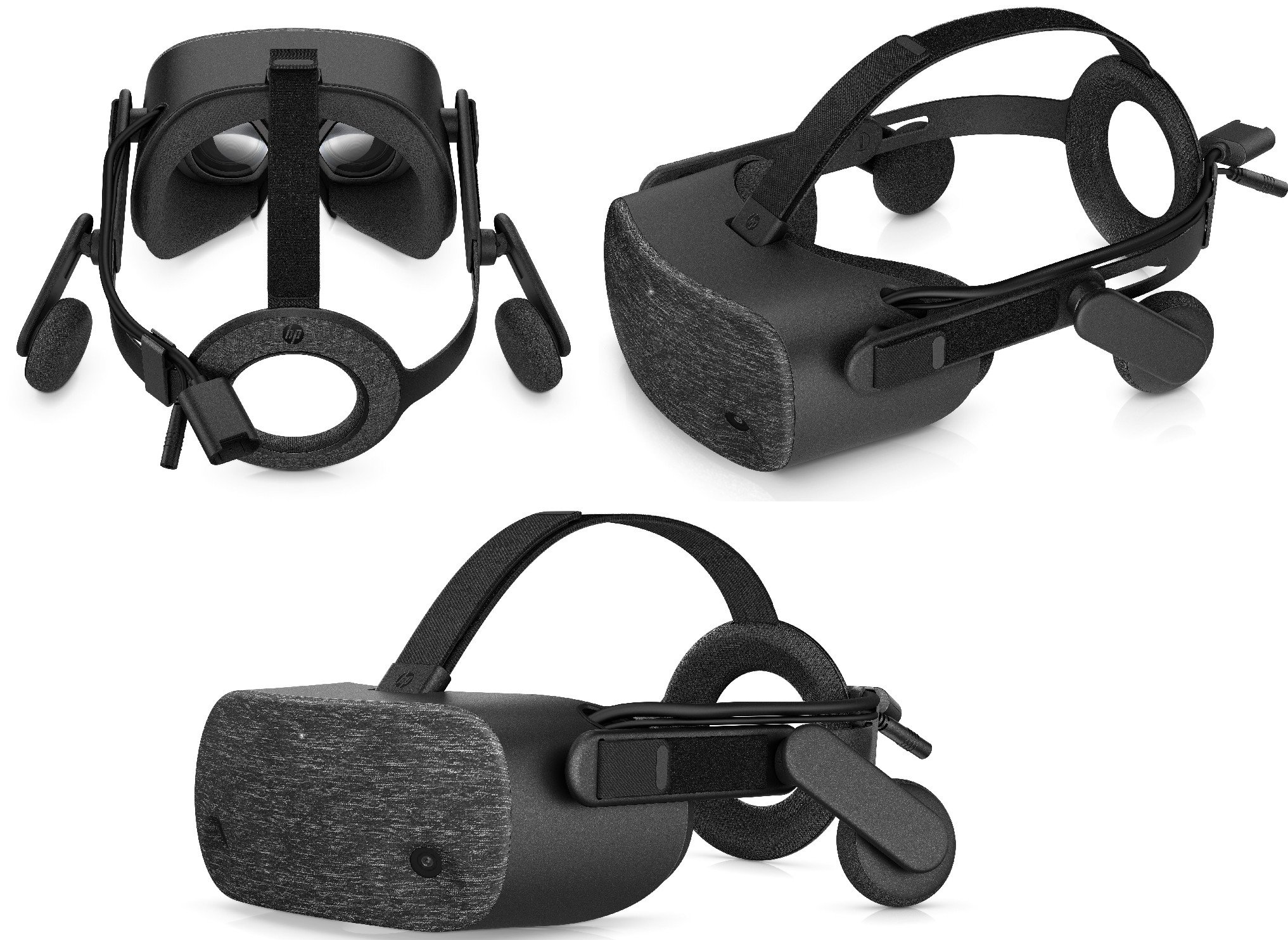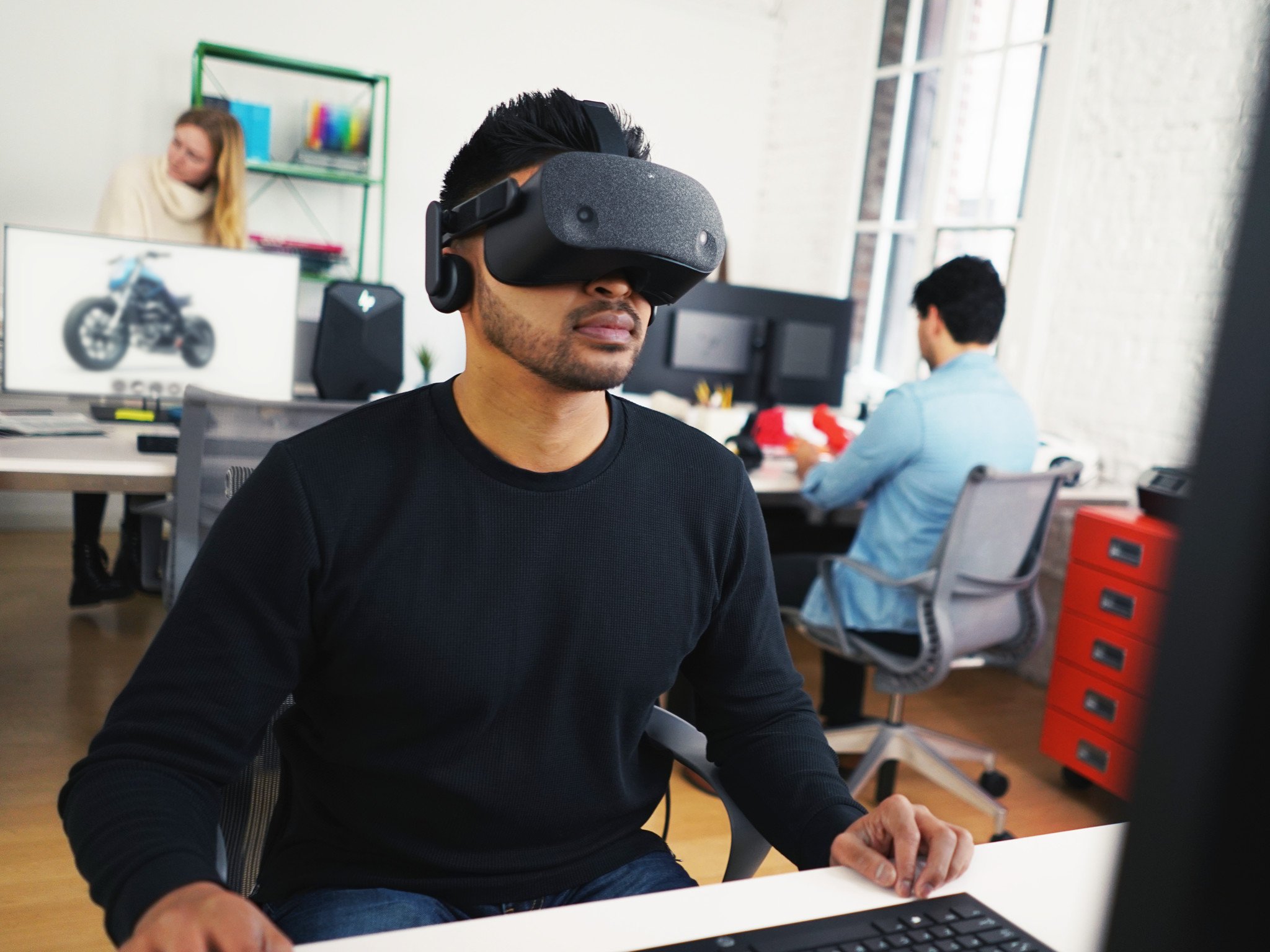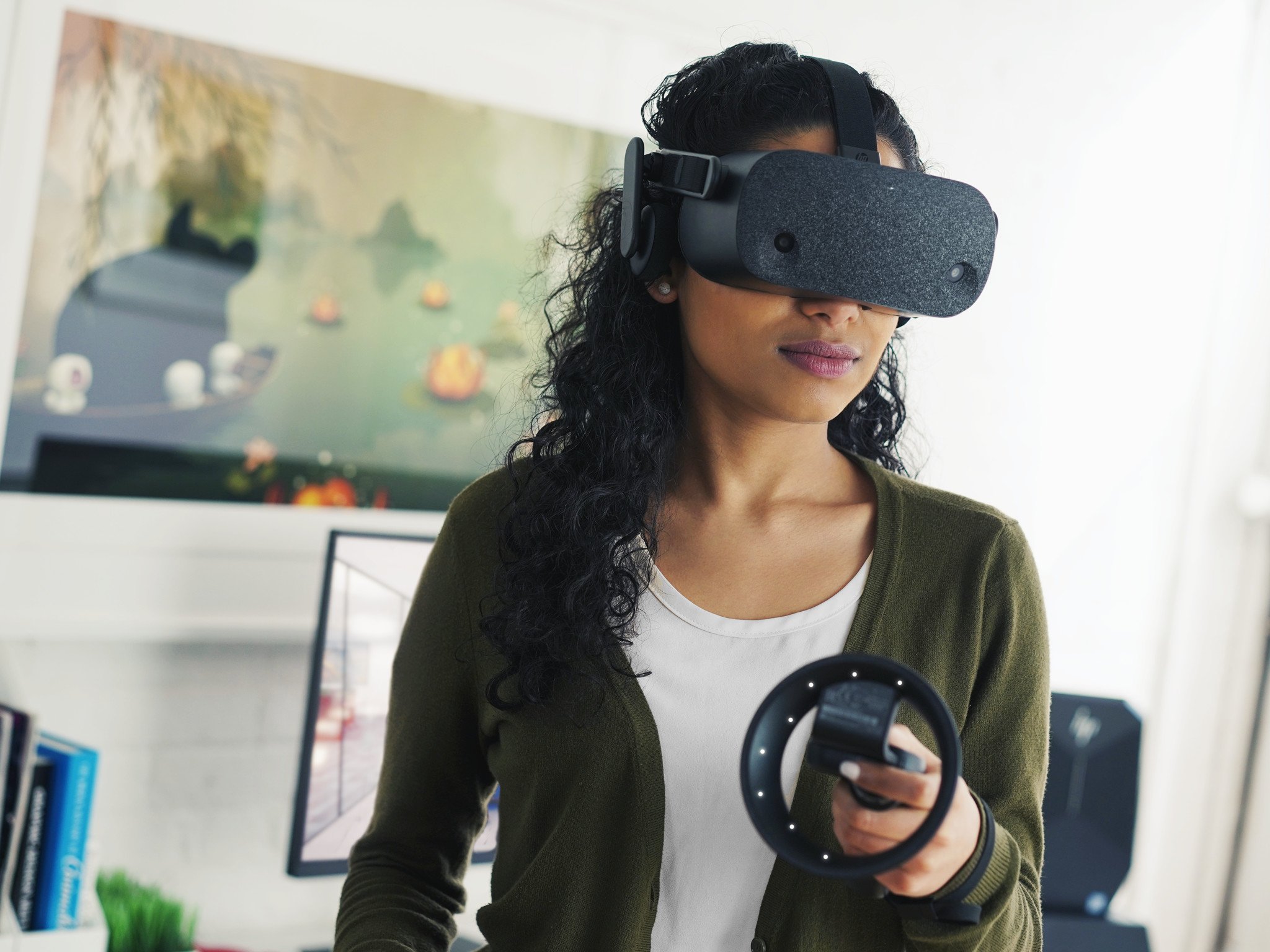HP Reverb is a Windows Mixed Reality (WMR) headset with a focus on comfort
Pushing VR even further, the new Reverb could be the best HMD on the market.

HP is still pushing forward with its vision of Windows Mixed Reality (WMR) – specifically virtual reality (VR) – with its second-generation head-mounted display (HMD), called Reverb.
The headset is being aimed at commercial users who do vocational job training, work in hospitals (including patient treatment), engineering, and in professional entertainment venues for specific media experiences. HP is also positioning the Reverb towards consumers with a slightly cheaper version aimed at that demographic, which is mostly focused on VR gaming experiences.
HP Reverb doubles down on comfort and resolution
HP has a few main goals it wants to accomplish with the Reverb over its predecessor, but increased comfort and resolution are the big ones.
The Reverb ships with new squarish lenses (versus circles) that run at 2160 x 2160 per eye for a combined resolution of 4320 x 2160. The field of view has also increased to 114 degrees compared to the previous 110 degrees. Those square lenses give a larger "sweet spot" for focal points compared to current generation circle lenses, and they also negate the need for inter-pupillary distance adjustments.
The system is capable of running at 90Hz thanks to the DisplayPort 1.3 connection required to use the headset (along with a traditional USB Type A connector).
The Reverb is significantly smaller than first-generation WMR headsets coming in at just 1.1 pounds (500 grams). There's also a nice cloth front now, giving the headset an excellent fit and feel.
Built-in headphones, dual microphones for Cortana, and now Bluetooth make the Reverb a much easier device to use out of the box. No longer do you need to pair the included motion controllers as they work directly with the Reverb with no configuration.
Get the Windows Central Newsletter
All the latest news, reviews, and guides for Windows and Xbox diehards.
After wearing the headset for a few minutes, the Reverb is significantly more comfortable to wear compared to current WMR, headsets making this an essential evolution of the category.
Growing need for VR in industry

HP cites the requirements of many companies who need a more streamlined VR experience. Windows 10 is ideal for this situation since IT departments already manage PCs with the OS installed, making deployment significantly easier than competing systems.
One area HP highlighted for its VR potential is hospitals. One study used VR to assist in reducing pain and opioid drug use in cancer patients. VR is good at tricking the brain into not feeling pain or gets patients to think about – and experience – other things besides chronic pain, HP says. In a research project carried out to test the efficacy of VR in pain treatment, researchers saw a 30 percent reduction in pain and about a 20 percent reduction in opioid utilization, according to the company.
Another example of VR in the workplace was an Occupational Safety and Health Administration (OSHA) training simulation. The user must walk around a factory floor and spot potential violations and chose solutions based on the severity. The experience is quite lifelike, but besides being more enjoyable, research has shown that retention rates of upwards of 75 percent are achieved with such VR training compared to 5 to 10 percent when just reading or watching a video.
It's because of these scenarios that HP is seeing significant interest in VR solutions in commercial settings and even outpacing consumer ones.
HP Reverb pricing and availability

The HP Reverb looks to be a noteworthy evolution of the WMR category. The headset is smaller, more comfortable, has all the features built in this time (such as headphones and microphones), and the visual acuity has increased dramatically.
It is not cheaper, however, but the system does include everything in the box except for the Windows 10 PC. Because of the increased resolution and refresh rate, HP is recommending at least an NVIDIA GTX 1080 for the best experience.
There will also be two versions offered, one for consumers and one for commercial purposes.
HP Reverb Professional Edition
The HP Reverb Virtual Reality Headset – Pro Edition is scheduled for availability starting in late April for $649 (U.S.). The Pro Edition price includes the HP VR Headset, a 3.5 m headset cable for desktop and mobile PCs, a 0.6 m headset cable for HP Z VR Backpack wearable VR PC (sold separately), two motion controllers, cleanable face cushion, and one DisplayPort to mini DisplayPort adapter. The Pro Edition has a one-year limited commercial warranty.
HP Reverb Consumer Edition
The HP Reverb Virtual Reality Headset – Consumer Edition is scheduled for availability starting in late-April for $599 (U.S.). The Consumer Edition price includes the same gear as the pro edition except for the 0.6 m headset cable and washable fabric face cushion. The Consumer Edition includes a one-year limited consumer warranty.
We'll have more information on the HP Reverb when it hits store shelves later in April, and we'll follow up shortly thereafter with a review.

Daniel Rubino is the Editor-in-chief of Windows Central. He is also the head reviewer, podcast co-host, and analyst. He has been covering Microsoft since 2007 when this site was called WMExperts (and later Windows Phone Central). His interests include Windows, laptops, next-gen computing, and wearable tech. He has reviewed laptops for over 10 years and is particularly fond of 2-in-1 convertibles, Arm64 processors, new form factors, and thin-and-light PCs. Before all this tech stuff, he worked on a Ph.D. in linguistics, performed polysomnographs in NYC, and was a motion-picture operator for 17 years.
